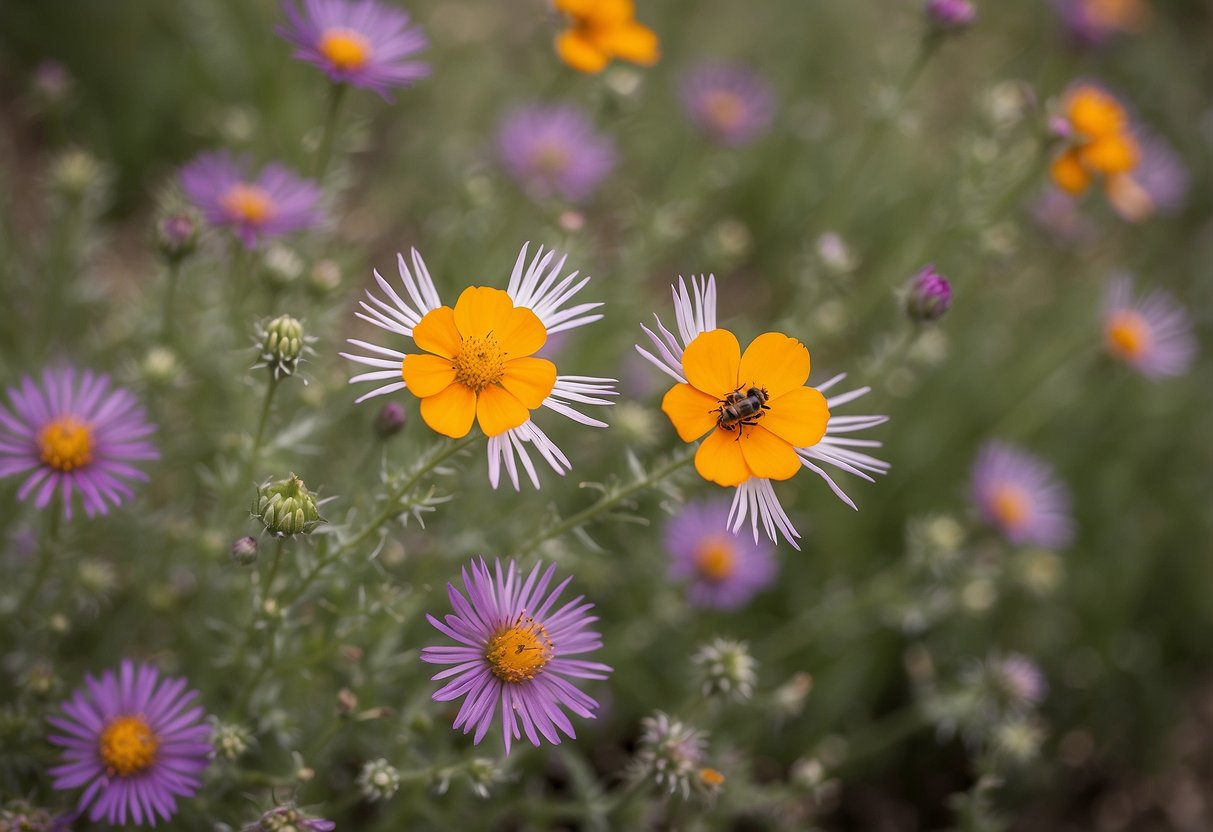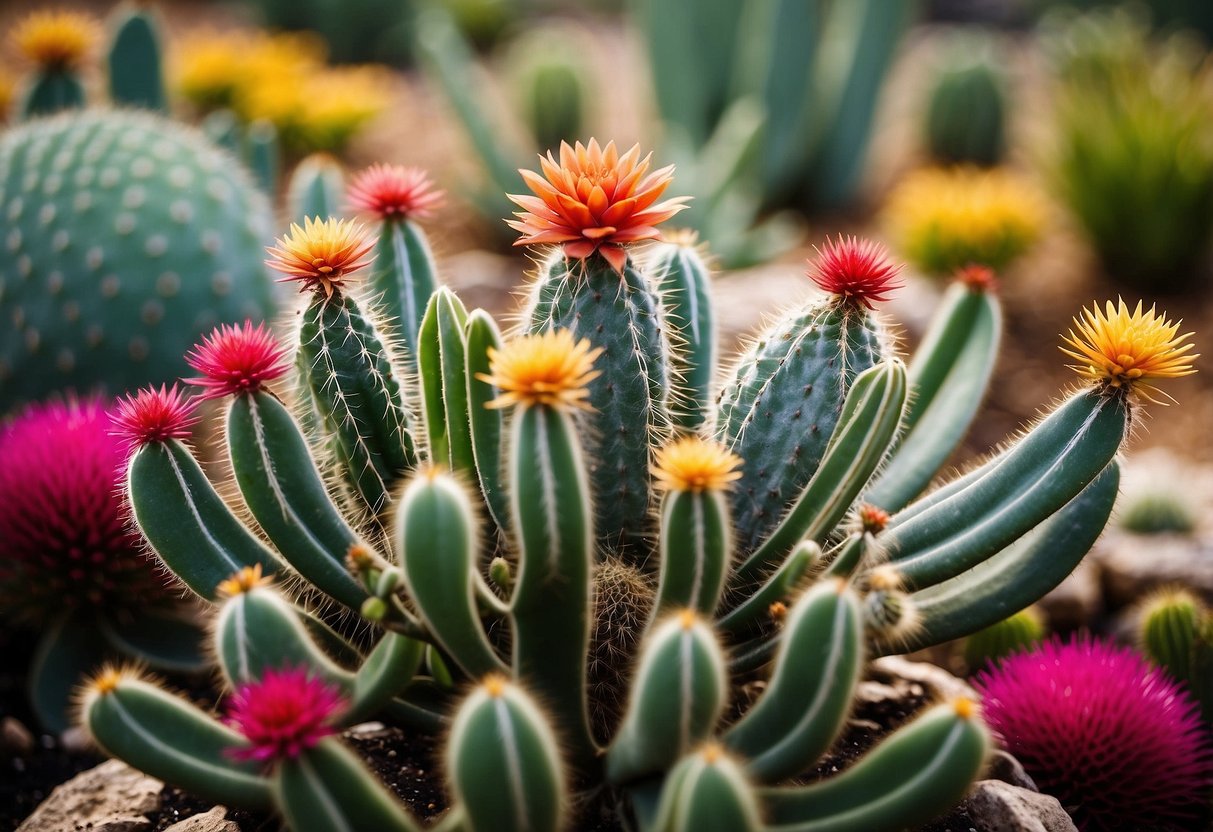Central Texas Garden Ideas: Creative Tips for a Blossoming Oasis
Gardening in Central Texas offers a unique blend of challenges and rewards. The region’s hot summers, mild winters, and occasional drought can make plant selection tricky. Yet, with the right ideas and plants, you can create a thriving garden that brings beauty and enjoyment year-round.

What makes Central Texas gardening special is its diverse plant options suited for the local climate. From native plants that withstand heat to colorful flowers that brighten your space, there’s something for everyone. Your garden can thrive with a little creativity and knowledge about what works best in this region.
1) Drought-Tolerant Plants

Creating a garden in Central Texas? You’ll need plants that can handle the heat and dry conditions.
Consider the Coral Honeysuckle. This plant thrives in arid climates and looks lovely on trellises and fences.
For a splash of blue, try the Salvia farinacea ‘Henry Duelberg’. It’s easy to grow and attracts hummingbirds and butterflies.
The Dwarf Yaupon Holly is another great choice. It works well as a border plant and attracts birds.
2) Raised Bed Gardening

Raised bed gardening is a great way to grow plants in Central Texas. It helps improve soil drainage and keeps weeds at bay. Plus, you can control the soil quality better.
For water conservation, consider installing drip emitters. They ensure plants get water directly at their roots. This method is efficient and reduces water waste (learn more).
Choose plants that thrive in heat, like tomatoes, peppers, and eggplants. They grow well in raised beds and can handle the Texas sun (find out more).
3) Native Wildflower Mixes

Adding native wildflower mixes to your garden brings color and attracts pollinators. It’s a win-win!
You can mix flowers like Plains Coreopsis and Butterfly Weed, which are suitable for Texas gardens. These flowers thrive in the local climate and need little maintenance.
Native wildflower mixes are perfect for creating a natural look. They support local wildlife and make your garden more vibrant and lively with minimal effort. Learn more about Texas wildflowers to find the perfect mix for your space.
4) Herb Gardens

Herb gardens are a great way to add beauty and function to your Central Texas garden. You can grow herbs like oregano, which thrives year-round and also acts as an ornamental plant.
Consider placing your herbs in colorful pots by the window to brighten up your kitchen. Or, use wooden box planters for a rustic touch.
Don’t forget to plan for some sun and space them properly, especially if you’re growing herbs like catnip. Your herbs will look lovely and provide fresh ingredients for your meals.
For more tips on growing herbs in Texas, check this guide.
5) Rainwater Harvesting Systems

Rainwater harvesting is a smart way to make the most of natural resources. You can easily collect rainwater from your roof and store it for later use.
Installing rain barrels or larger tanks helps you save water for your garden. It’s eco-friendly and can reduce your water bill.
Consider using a rain garden to absorb excess rain. They’re simple to maintain and boost your garden’s resilience during dry spells.
6) Butterfly Gardens

Creating a butterfly garden in Central Texas can be both fun and rewarding. For the best results, choose the sunniest spot in your yard since more sun means more nectar for the butterflies.
Plant native species, as butterflies in the region are already adapted to these. Consider planting in mass groups to make it easier for butterflies to find the plants.
Don’t forget to include a variety of plants that bloom in spring, summer, and fall to keep butterflies visiting your garden all year round. Raised beds can be helpful since many butterfly plants prefer deep, rich soils.
You can find more tips and plant ideas from Garden Style San Antonio and The Natural Gardener.
7) Xeriscaping Techniques

Xeriscaping helps you save water and create a beautiful garden with minimal maintenance. Start by choosing drought-tolerant plants like Texas Sage and Lantana, which thrive in the heat.
Group plants with similar water needs together. This ensures efficient watering. Use mulch to retain soil moisture and reduce evaporation.
Instead of a traditional lawn, consider alternatives like gravel or rock gardens. These require less water and effort. Be sure to mow high if you keep some lawn. For more ideas, check out Texas Xeriscape Ideas.
Happy gardening!
8) Shade Garden Ideas

Creating a shade garden in Central Texas can be a rewarding project. Begin with plants like horseherb (Calyptocarpus vialis). This evergreen groundcover blooms yellow and can replace traditional lawns in shady spots.
Consider adding twistleaf yucca for a low-maintenance and native option. It’s great for reflecting light and adds texture.
Succulents like aloe vera and cacti such as barrel cactus thrive in the shade, bringing a unique contrast to your garden.
9) Vertical Gardens

Vertical gardens are perfect for adding greenery while saving space.
In Central Texas, you can grow plants vertically on walls or trellises. This method maximizes room and adds visual interest.
You might try a strawberry tower garden for a mix of beauty and practicality. Vertical gardening also makes tasks easier and more accessible. Learn more about 23 vertical gardening ideas. Start growing up!
10) Cacti and Succulents

Cacti and succulents are perfect for a Central Texas garden. They love the warm climate and can handle drought conditions well. These plants come in many shapes and sizes, adding variety to your garden.
You can plant Beavertail cactus which has beautiful dark cherry pink flowers that smell like watermelon. For unique garden accents, try using decorative glass balls to reflect the cactus’ beauty. This makes your garden space more interesting and dynamic.
Another great option is to create a Texas-inspired cactus garden for less than $30, making it budget-friendly while still being beautiful.
Key Principles For A Central Texas Garden

Creating a beautiful and sustainable garden in Central Texas requires careful consideration of the local climate, soil, and water resources. Here’s what you need to know to ensure your garden thrives throughout the year.
Choosing Native Plants
Opt for native and drought-tolerant plants to withstand the Central Texas climate. Plants like Texas sage, blackfoot daisy, and esperanza are excellent choices. These plants not only adapt well to the local conditions but also require less water and maintenance.
Including native flowering plants such as coneflowers and roses can add vibrant colors while being eco-friendly. Ornamental grasses like Muhly grass can bring texture to your garden. Avoid invasive species that can disrupt the local ecosystem.
Understanding Soil Types
Central Texas has various soil types, from clay to sandy loam. Understanding your soil type is crucial. You can conduct a simple soil test to check pH levels and nutrient content. Adding organic matter like compost can enhance soil structure and fertility.
For clay soils, adding gypsum can improve drainage. Sandy soils may need more organic matter to retain moisture. Proper soil preparation ensures healthy plant growth and reduces the need for chemical fertilizers.
Efficient Watering Techniques
Water conservation is vital in Central Texas gardening. Drip irrigation systems are efficient as they deliver water directly to the plant roots. This method minimizes evaporation and water waste.
Mulching around plants can help retain soil moisture and reduce the frequency of watering. It also regulates soil temperature and prevents weed growth. Consider using rain barrels to collect rainwater, providing a free and sustainable water source for your garden.
Another good practice includes watering early in the morning or late in the evening when temperatures are cooler, reducing evaporation. Avoid overwatering, as it can lead to root rot and other plant diseases.
Helpful Tips For Garden Success

Successful gardening in Central Texas requires adapting to the local climate and addressing common gardening challenges. Focus on seasonal strategies and pest control.
Seasonal Gardening Strategies
The climate in Central Texas varies greatly with each season. To thrive, you should plant according to the specific needs of each season.
-
Spring: Start planting in late March or early April for vegetables like tomatoes and peppers. Use raised beds to warm the soil quickly.
-
Summer: Choose heat-tolerant plants like okra and sweet potatoes. Mulch with coconut coir to retain moisture and cool the soil.
-
Fall: Plant fast-growing vegetables like spinach and radishes. Protect seedlings by adding shade or using row covers.
-
Winter: Grow cold-resistant crops, such as kale and broccoli. Cover plants with frost cloths during cold snaps.
Adjusting your planting schedule to the local climate helps ensure maximum growth and yield.
Combating Common Pests
Dealing with pests is crucial for a healthy garden. Identifying and managing pests early can save your plants.
-
Aphids: These tiny insects suck sap from plants. Control them by spraying with a mix of water and mild soap.
-
Caterpillars: Handpick them off your plants. Use Bacillus thuringiensis (Bt) for natural control.
-
Spider Mites: These pests thrive in hot, dry conditions. Use a strong water spray to knock them off or apply neem oil.
-
Fire Ants: Keep them away with bait stations or diatomaceous earth around plants.
Regularly check your garden for signs of pests and use these methods to keep your plants healthy and productive.







